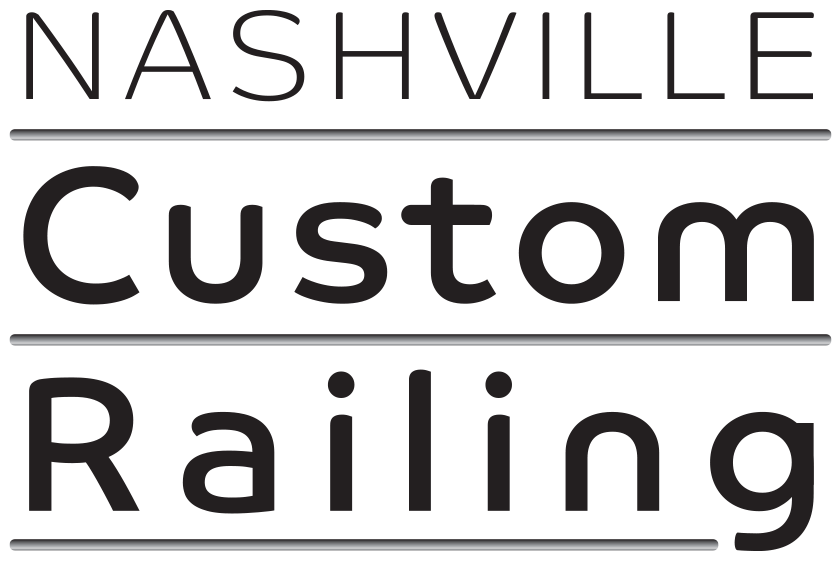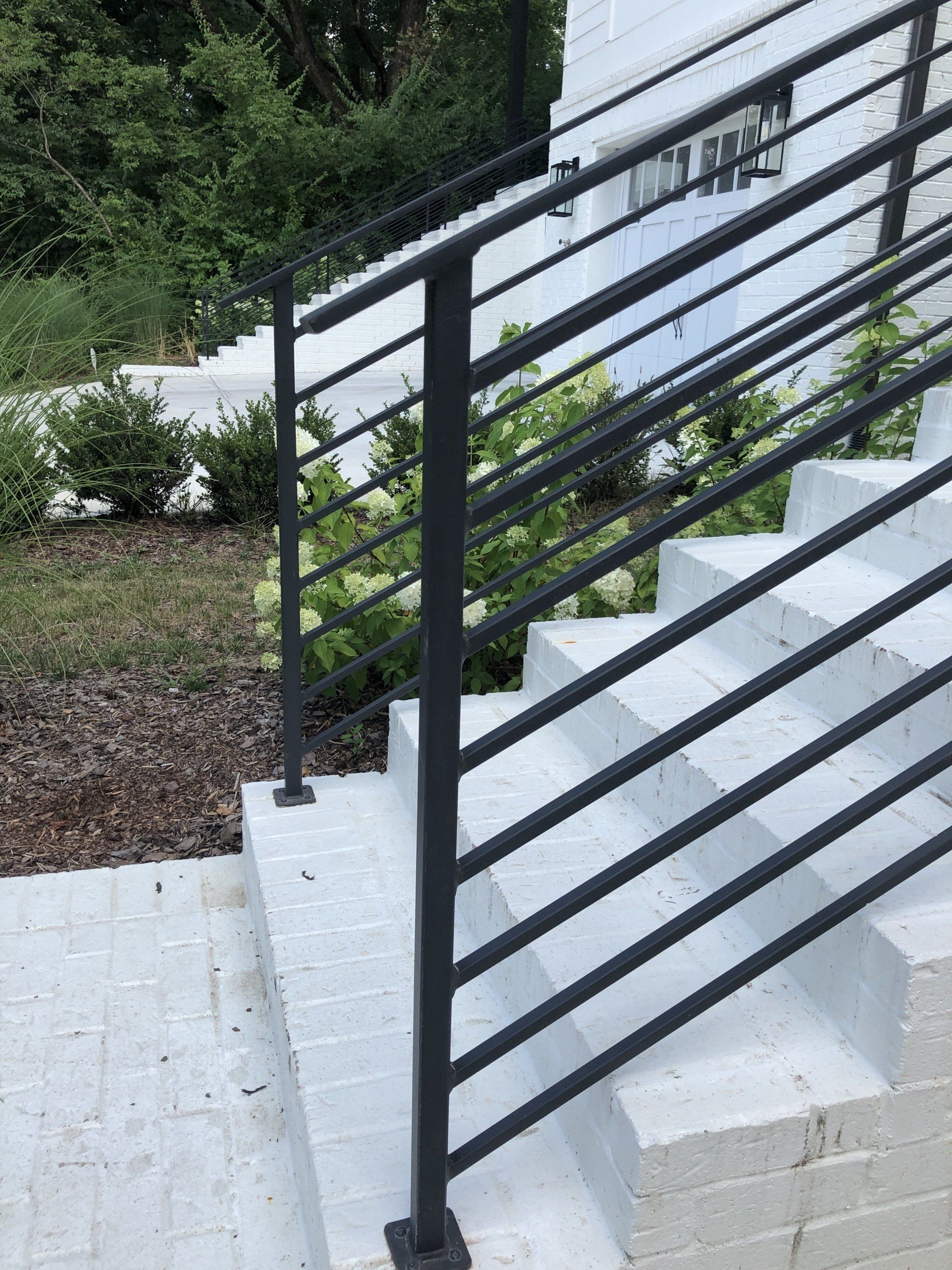Powder Coated Products for Nashville
Our best products are powder coated.
As a railing contractor who has been in the handrail industry for over 18 years, we’ve seen and repaired our fair share of aged metal. The old proverb says it best: nothing lasts forever. But it’s also true that if you put in extra time and effort up front, you can create lasting effects that generate major savings down the road. For this reason, when it comes to the lifespan of our fences, gates, and railings, we opt for a double powder coat as a standard feature.
Over the years we have developed a strong relationship with a Nashville powder coating shop which we use regularly. Although the studio may powder coat all kinds of pieces, we most often use them to coat our handrails, fences, and gates in order to increase the lifespan of these products and protect them against extreme weather. Reliability and added assurance are traits our customers have come to expect from us.
What is Powder Coating?
Powder coating can be used to decorate, finish, or protect many objects, most frequently metal. The process uses a dry powder instead of liquid paint. While paint includes an adhesive to make it stick, powder coating is put into place with an electrostatic charge by a spray gun. Once the parts are thoroughly and evenly coated, heat is applied which cures the powder making it permanently affix to the metal.
Most traditional brands are made from a mix of leveling agents, flow modifiers, a curing agent, and additives. Pigments can be added to customize the look of the coating, in as many colors as can be created with paints. The ingredients create a polymer resin system which will become hard while bonding, providing strong protection able to hold up to wind, rain and being hit with debris. Once fences or gate posts have been thoroughly powder coated, the final coat can be cleaned with a pressure washer without being removed or damaged.
The details around how this process works is part of a scientific method. During the powder application, an electrostatic charge is used on the particles propelled by the spray gun toward the target. In order for the charged powder to stick to the receiving object, the object must be grounded. This can be done by installing a 6’-10’ copper rod in the ground then running a cable between the grounding rod and the rack on which the part is hung. The principle at play here is that electricity tries to find the easiest path to the ground. The stronger the ground, the better the powder will stick. If the ground is too weak, the powder application can be comprised leading to poor coverage and spotty results. Spraying is best executed in a booth or clean room to prevent unwanted dirt from showing on the end result.
Curing the Powder Coat
As the powder connects to the component, the bonds grow stronger, but they are not solidified until heated. After the spraying is complete, the parts must be baked in a curing oven where the particles chemically react, becoming more resistant to breakage. Each powder manufacturer may have slightly different guidelines for the cure schedule (time and temperature) to yield the best results. Oddly enough, under curing and over curing can lead to similar problems; a brittle coat that is not as durable or visual defects. If the parts are not cured long enough, the polymer chains won’t complete the bonding process. Cooking them for too long, and brittleness will also remain a factor along with the loss of a glossy finish or discoloration such as a yellowing or browning of the final product. Fortunately, powders tend to have some over-bake stability in them which means they can bake for longer than needed, but not at a higher temperature. This is because powder will usually vary in thickness on each part. An ornate curve might have extra buildup of powder compared to a long straight bar. Without this element, the areas with thinner coatings could not bake as long as the thicker areas without burning. Like traditional paint, additional coats can be applied to the same item for increased protection and longevity.
The most common way to hold parts during spraying and curing, is to hang them on clean metal hooks. Although the electrostatic charge combined with grounding is supposed to create a glue-like effect, the powder can still be brushed or knocked off before it is cured. Hooks and racks may need to be wiped or even ground free of powder after several uses in order to preserve a clean, metal-to-metal contact point. Whenever possible cleaning the racks and hooks before they enter the oven can prevent the powder from getting baked on and then having to be ground off before each use.
Cleaning Prior to Powder Coating
For best results, we make sure all of our pieces are thoroughly cleaned before any powder coating begins. One of the most common cleaning procedures at the shop is to power wash everything. This easily removes any dust or dirt build up that has happened during the transport of our fence posts, railings, etc. Power washing takes less time than wiping down each individual piece by hand. There are however more manual ways to clean the products just as well. A soapy or clean rag is usually all that is required on new metal. In the less frequent instance of repairing and refinishing parts for a customer, an iron brush a rigid brush combined with metal cleaning solution will do the job of removing oil, grease or contaminants. There are cleaners out there which will corrode or weaken metal so make sure to research all the options. The other major advantage to a clean product from the start is that the coating is less likely to show specks or bumps in the finish.
The shop we partner with provides the additional pro step of blasting all objects ahead of the coating. Some facilities use media blasting which sprays various granules at the metal. In our professional setting we use a traditional sand blasting process to prep the items. The objective is two-fold. The first goal is an extension of the cleaning phase; to make sure that any existing paint, rust or corrosion is completely stripped away. At the same time this is happening, the force of the sand hitting the metal creates scratches which leave tiny hills and valleys. The pieces now have a rough finish, or a surface profile, which creates a texture and subsequently more surface area, both of which are advantageous for the powder to adhere. The surface will now be similar to a microscopic sawtooth which grips the coating better than a perfectly smooth surface that may lead to the powder sliding or peeling off. This unwanted affect is referred to as delamination.
The Main Event
Following the cleaning and blasting, we’re ready for the powder coat. Pro Tip: The spray gun will be most effective at a low setting, between 5-10 PSI. The objective is to form a nice cloud of powder in order to get an even coat. Because of the electrostatic charge, the powder will be attracted to the objects. Pressure is not needed. With intricate parts, a slower spray allows the powder to fill in the details more thoroughly. We spray the most complex areas first then move to the less detailed places.
Another trick that is utilized in the shop for ornate handrails is shining a LED light towards the object as it’s sprayed. The light and shadows can help more easily identify areas that aren’t getting fully covered in powder. An experienced sprayer can feel the perfect balance between too much and too little powder. If there is not enough coating, vacant areas will leave bare metal exposed which can oxidize and rust faster because it is not protected. Applying an overly heavy coat can cause a bumpy texture, referred to as orange peel. Without a smooth coat, chipping can occur plus it’s less visually appealing and may look unprofessional.
Precautions and Sustainability
It’s important to use protective gear whenever spraying powder. It can cause minor damage to your skin but can have way more serious effects on your eyes and lungs. A respirator (or gas mask) can prevent inhalation of particles. Best practice is to don goggles, a long sleeve shirt, and disposable gloves. Although using a booth with a filtered exhaust is important, the air can safely be duct to the rest of the shop. The exhaust air is clean enough that it does not need to be filtered to the outside. The EPA has designated powder coating as a sustainable option. It’s better than liquid paint because it creates virtually no VOCs or air pollution.
If you decide to take your business elsewhere, we encourage you to request a double or at least single layer of powder coating for any metal fence because extended shelf life and hours saved from cleaning and maintenance will keep a property looking better without having to shell out for constant maintenance. Nobody wants a fence or gate that quickly shows signs of aging. Give us a call and we’d be happy to answer any questions you have about how our standard procedures can usually be implemented at a cheaper price than a comparative Nashville fence installer.
WE SERVE CLIENTS IN THE AREAS LISTED BELOW AND MANY OTHERS
Nashville | Hillsboro-Belmont | Green Hills | Belle Meade | West Meade | West End | Sylvan Park | The Nations | Downtown | East Nashville
Brentwood | Franklin | Bellevue | Donelson | Madison | Hendersonville | Antioch | La Vergne | Smyrna | Murfreesboro | Clarksville
WE SERVE CLIENTS IN THE AREAS LISTED BELOW AND MANY OTHERS
Nashville | Hillsboro | Belmont | Green Hills | Belle Meade | West Meade | West End | Sylvan Park | The Nations | Downtown | East Nashville
Brentwood | Franklin | Bellevue | Donelson | Madison | Hendersonville | Antioch | La Vergne | Smyrna | Murfreesboro | Clarksville | Gallatin
Mt. Juliet | Hillwood | White Bridge | Melrose | 12 South | Berry Hill | Glencliff




